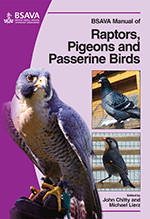
Full text loading...

Radiography is an important and well described diagnostic technique in birds. It provides useful information about the size, shape and radiodensity of the inner organs. Due to the air sac system, most of the organs are outlined against each other, facilitating radiographic assessment. This chapter explores general considerations; equipment; positioning and views; assessment and interpretation; and contrast radiography.
Radiography, Page 1 of 1
< Previous page | Next page > /docserver/preview/fulltext/10.22233/9781910443101/9781910443101.11-1.gif

Full text loading...







